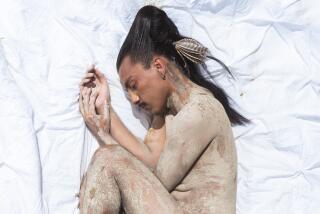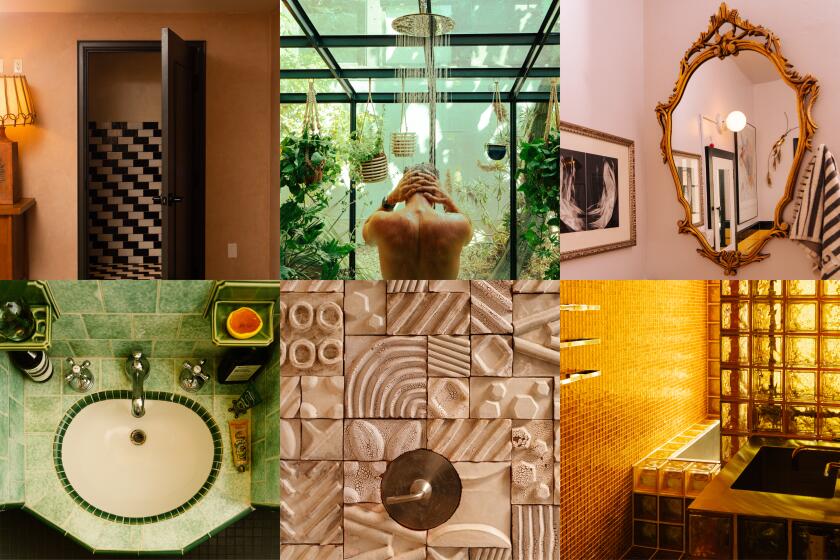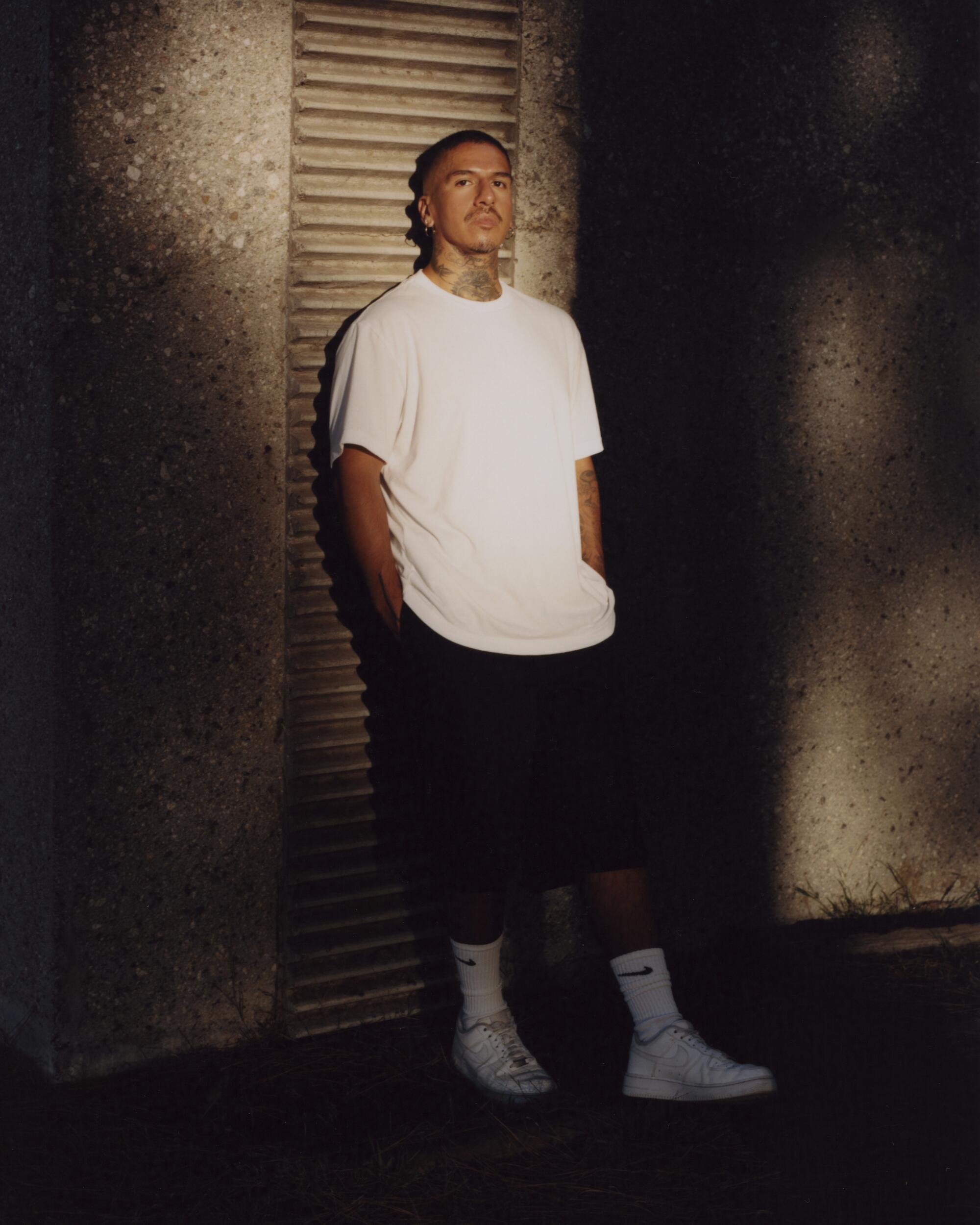
This story is part of “Corpo RanfLA: Terra Cruiser,” a special collaboration between rafa esparza, Image magazine and Commonwealth and Council. See how the whole project came to be here.
With this piece, “Corpo RanfLA: Terra Cruiser,” he’s transcending and growing. I admire rafa’s work ethic. This growth is something that I get to see every day. I support him — because he’s done nothing but support me — like other members of the community. I learned that from him: My work is not only about me, it’s about other people. I’m just glad I get to be a part of this. I can just go with him and admire the journey. And experience the magic.
When I met rafa, it was through Instagram. I was maybe in my late 20s, mid-2016. At the time, I was still figuring myself out. I didn’t really consider myself an artist. I was definitely just taking pictures. I remember clearly thinking I definitely wanted to have someone to talk to about my work, the art world in general, what steps I should take myself. So I messaged him to see if he wanted to meet up with me for a coffee. He was super open to it.
We met in downtown L.A, where Grand Central Market is. I remember most from that conversation that when he had asked me, “What do you do with your work?” I was just like, “Well, I’m only doing what I like to do, what feels right.” He was like, “Well you’re an artist, you’re making work. Ever think about those things?” I didn’t go to school for art. Growing up the way I did, you have few outlets to express yourself in ways or to meet people in the art world. Living in Los Angeles was like a learning experience because I was surrounded by so many brown artists. I was already inspired by the movement — brown art, especially queer art — but I wasn’t really seeing a lot of brown queer identities through imagery at the time. So I kind of told myself, “Let me be that person to represent that.” He invited me to be a part of a group show and asked me if I would be interested. Ever since then, he’s just given me that kind of platform and experience. Just kind of opened doors for me, really changed my life.
As I go on with my life, I always mention him as really opening up a door for me. Ever since, our relationship got stronger and stronger. I started hanging out with him more. He was inviting me places — weddings, performances — and making sure that I had community around me. And that’s when he started inviting me more into his work. He would have me be a part of it in ways — showing up to document it or including me to be creative within this process. rafa’s work is very community-oriented. Anything he does, he has community helping him. It becomes a bonding experience, rather than work or anything that is structured. The best part of art — or his art — is you’re able to see there’s so much love there.
In 2018, he saw that I was documenting these queer, brown stories, especially the people in Los Angeles. He was also a person who understood doing what I was doing and why I was doing it. There was that connection. He grew up in L.A., not Texas, but there’s still this bridge that was there. When rafa was talking about lowrider culture — the scene and the history — it was very dominated by men or straight culture. You didn’t feel you would belong in these spaces. And to be honest, at the time, you couldn’t — you didn’t — belong in them. Every time we had to show up to these events we had to, like, act straight, hide our identities just so we could enjoy the moment, enjoy the car cruises, the car shows — but we weren’t accepted into these spaces. So when rafa first approached me about the project, I thought about that relationship between his work and mine.
He invited me to come over to where he was getting ready. Mario Ayala is airbrushing him. Tanya Melendez is doing his nails. That’s the power I always go back to: He is very community-oriented about the work and how he brings the people to the work together. I wanted to be a part of this because I loved what he was doing, and I wanted a secondhand experience, to be a part of it, to feel that power that he was able to bring with his work.

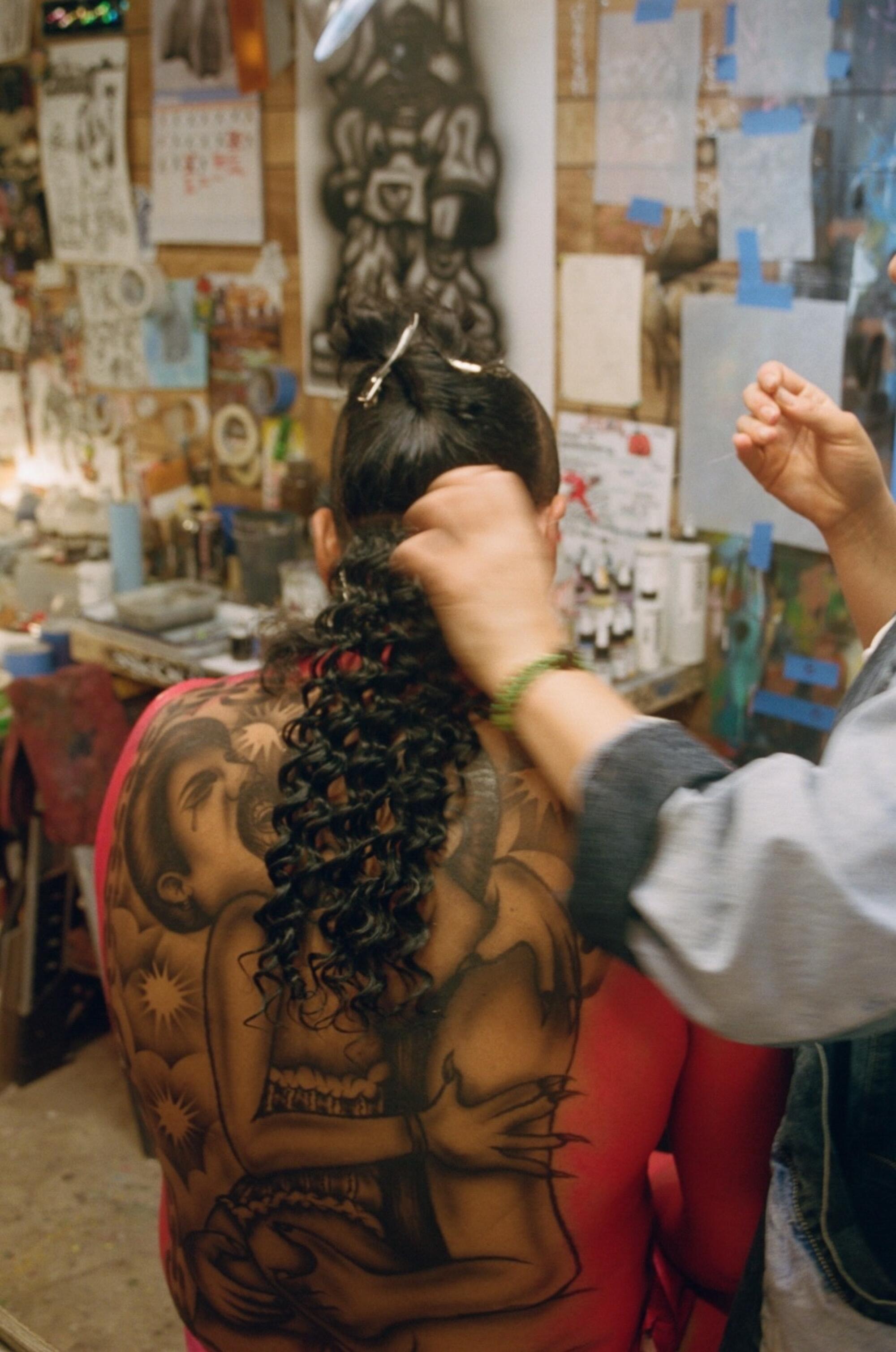
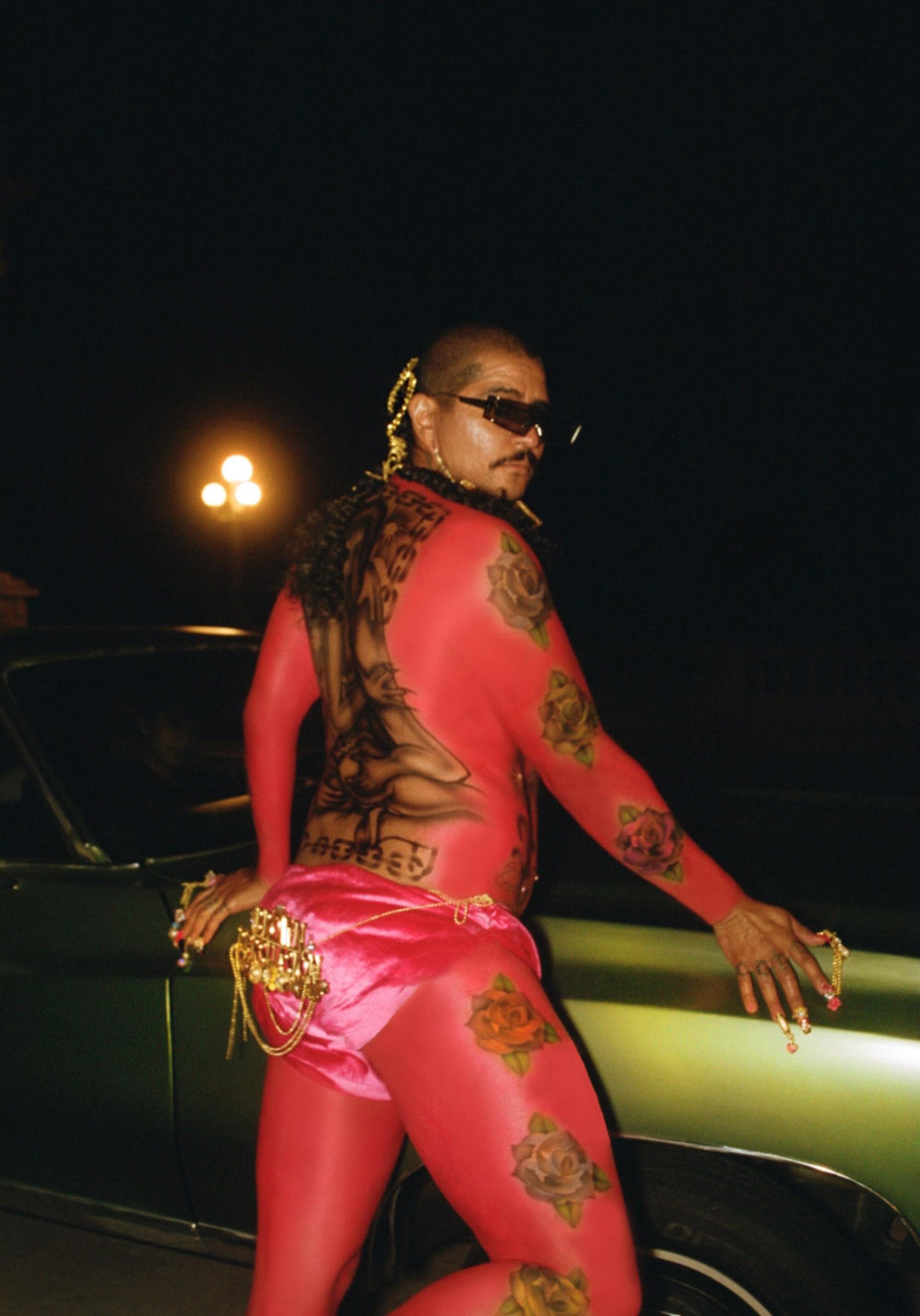
After that, we drove to Elysian Park to take photos there. Obviously it had a history of cruising. Then from there, we made our way to the Mayan Theatre downtown. And that’s the moment where he told me, “You’re gonna get onstage, and you will be performing with me.” I wasn’t prepared. I just had my little 35-millimeter camera. I was like, I’m just gonna go with my gut, see what happens. So I was onstage, fitting in with the energy, documenting him but also more than that — living in fantasy with him as he was moving, performing with him. I was taking these pictures and admiring this body of work as he expressed such sexuality and sensuality and intimacy.
I remember the music. That really struck me the most. The music just really took it back. I remember rafa coming onstage, painted, performing as this car but in human form. Walking onstage. Walking very seductively. Being very sexual with his body. Mario was shining him up like a car. Performing with him. Also Sebastian Hernandez was onstage being like the lowrider model that you will see on magazines or in car shows. The energy became so wild. I couldn’t even look at the audience because I was just too in the zone. I blacked out. It ran for a good 20 to 25 minutes. To be a part of it was a dream, a memory that is going to be with me forever.
The photos still run in the back of my mind. It’s a project and a body of work that to this day inspires me. I think the last time I was really looking at this was like a month ago actually. Sometimes I just go back and figure out what I have done. I like to reflect — it’s always good to consciously remember those moments and to think to yourself, “Why did I start? And how did I feel in this day?” Because sometimes inspiration still comes from past memories and things that we experienced. Even to this day, the way I’ve been a part of rafa’s work has really planted a big seed in me to make something out of it. And who knows what I’m gonna make out of it. One day, it will come to my head, but for now, I just like to enjoy it and daydream. Or, you know, just let it run wild.
A photograph accompanying an article on “Corpo RanfLA: Terra Cruiser” in the December 3, 2022 issue of Image Magazine was incorrectly credited to Fabian Guerrero. The photograph is by Gabriel S. Lopez.
